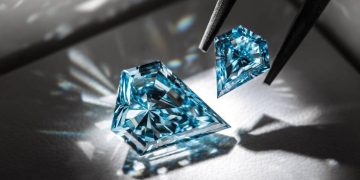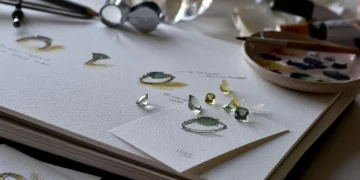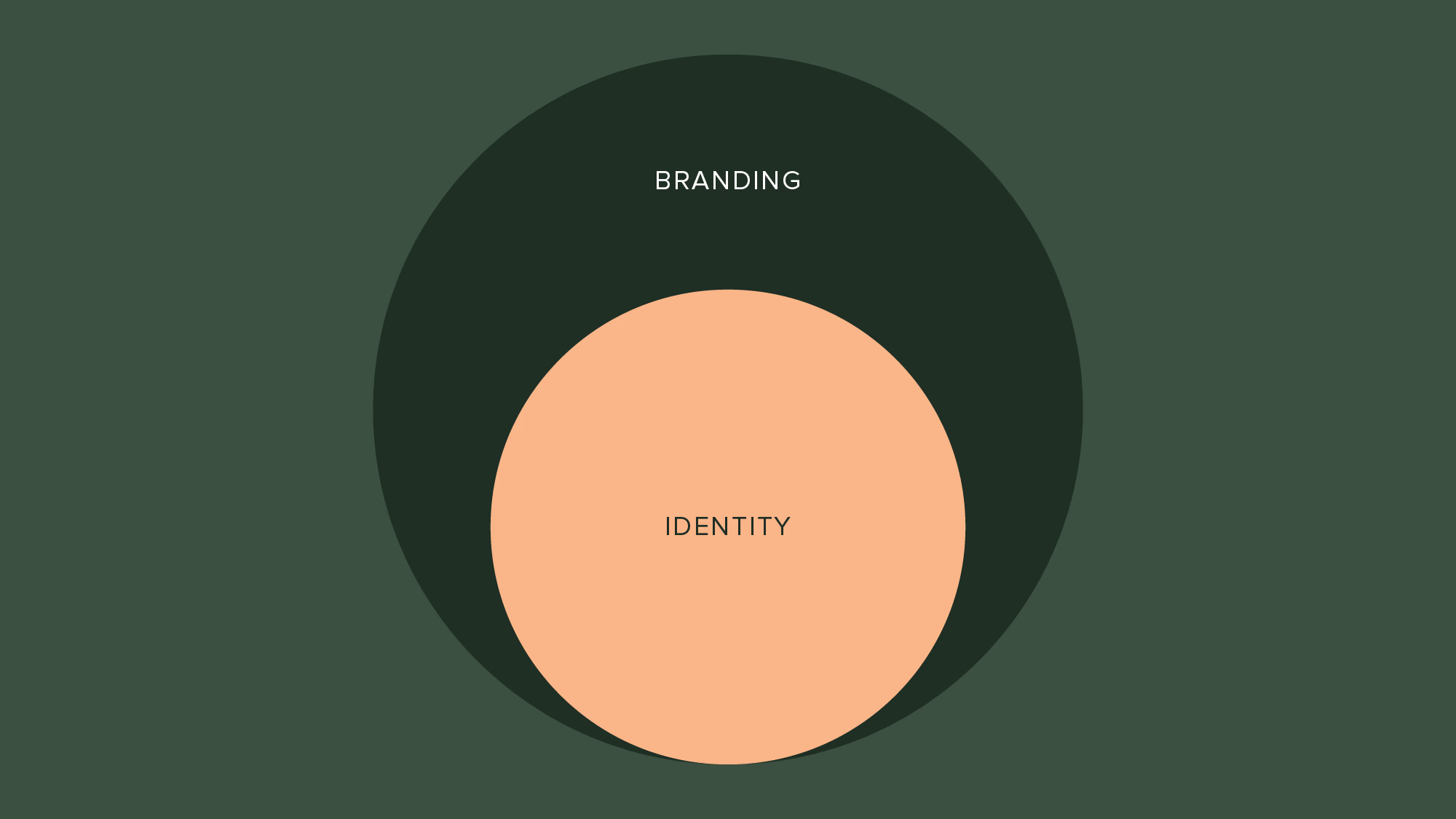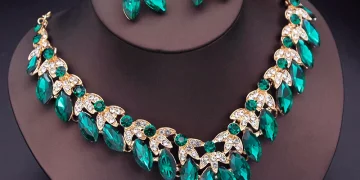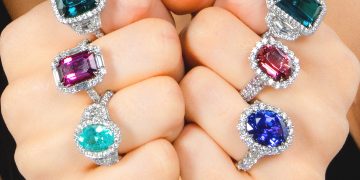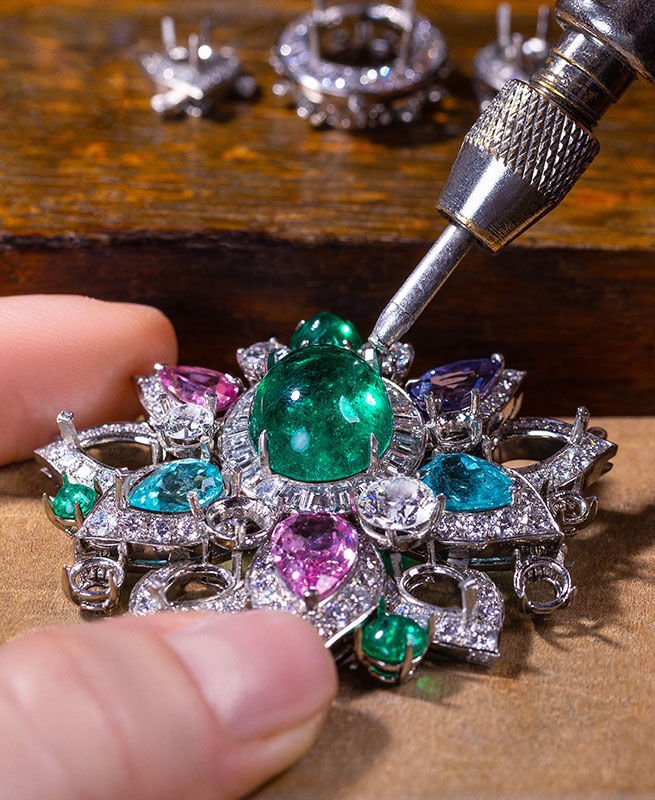Jewelry design, with its rich history steeped in tradition, has long been associated with timeless elegance and craftsmanship. For centuries, the art of jewelry design has followed established conventions and techniques, creating pieces that embody the ideals of beauty, luxury, and status. However, as the world of fashion and design evolves, a new generation of modern jewelry designers is challenging the status quo. These designers are experimenting with new materials, innovative techniques, and bold concepts, breaking free from the constraints of tradition and redefining what jewelry can be.
But can modern jewelry designers truly break tradition, or are they bound by the legacy of their predecessors? Can they push the boundaries of design while still creating pieces that resonate with the luxury market and appeal to consumers’ evolving tastes? In this article, we will explore how modern jewelry designers are both embracing and defying tradition, and whether it’s possible to completely break the design limits of the jewelry industry.
1. The Importance of Tradition in Jewelry Design
A. The Legacy of Jewelry Craftsmanship
Jewelry design is often rooted in centuries of tradition. Techniques such as filigree work, stone setting, engraving, and casting have been perfected over time by master artisans, becoming symbols of craftsmanship and luxury. Iconic houses like Cartier, Tiffany & Co., Van Cleef & Arpels, and Bulgari have upheld these traditions, maintaining a high level of craftsmanship while continuously innovating within these well-established boundaries.
Tradition serves as the foundation for many high-end jewelry pieces, and consumers often seek out the expertise and refinement of established brands that honor these techniques. These traditional methods have allowed designers to create timeless pieces that are passed down through generations, giving jewelry a sense of heritage and value. For many consumers, the connection to history, culture, and art is just as important as the design itself.
B. The Role of Tradition in Luxury
Luxury jewelry has always been about more than just aesthetics—it’s also about heritage, exclusivity, and quality. Pieces that are created using traditional techniques convey a sense of craftsmanship that is often linked to master artisanship. As a result, breaking from tradition can pose challenges for designers, as it risks alienating customers who expect a certain level of refinement and classic design.
In many ways, luxury is deeply intertwined with tradition. When a designer chooses to deviate from established methods, they must ensure that their pieces still reflect the luxury standards that consumers associate with high-end jewelry. Breaking tradition is a risk, but for modern designers, it’s often a necessary step in the pursuit of creative freedom and innovation.
2. Modern Designers Breaking Boundaries
A. The Role of Innovation in Modern Jewelry Design
Today, modern jewelry designers are not just confined to traditional materials and techniques. They are seeking to break boundaries by integrating new technologies, unconventional materials, and fresh design concepts into their collections. These designers are rethinking the very concept of jewelry and asking questions such as: Can jewelry be wearable art? Can technology play a role in the creation of fine jewelry?
One example of innovation in modern jewelry design is the use of 3D printing. This technology has revolutionized the jewelry industry, allowing designers to create pieces with intricate, geometric shapes, delicate textures, and complex patterns that would have been nearly impossible to produce with traditional methods. Designers like Alexander McQueen and Shay Jewelry have embraced 3D printing to create visually striking, avant-garde pieces that challenge the conventions of fine jewelry design.
Similarly, designers are also experimenting with unconventional materials such as wood, resins, plastics, and even recycled metals. These materials offer new possibilities for creating unique, sustainable designs that break away from the traditional use of precious metals and gemstones.
B. Conceptual Jewelry and Wearable Art
Another movement that represents a break from tradition is the growing trend of conceptual jewelry and wearable art. Designers like Bibi van der Velden and Suzanne Syz are pushing the boundaries of jewelry by creating pieces that are more about concept and storytelling than conventional notions of beauty. These designers often use unconventional materials, bold shapes, and non-traditional settings to create jewelry that is meant to provoke thought, inspire conversation, or make a social statement.
This trend of wearable art often challenges traditional perceptions of jewelry as something simply to adorn the body. Instead, it redefines jewelry as an expression of personal identity, culture, or even political ideology. Jewelry in this context becomes less about conforming to expectations and more about using design as a medium for communication.
3. Modern Technology and Jewelry Innovation
A. CAD (Computer-Aided Design) and 3D Printing
One of the most transformative technologies in the jewelry industry today is Computer-Aided Design (CAD). CAD allows designers to create virtual prototypes of their pieces, making it easier to experiment with shapes, sizes, and structures without committing to physical materials. CAD is frequently paired with 3D printing, which allows designers to print prototypes or even create finished pieces directly from digital designs.
This combination of CAD and 3D printing opens the door to a new era of jewelry design, where designers can create highly intricate, personalized pieces with ease. Traditional jewelry design methods, which often involve sketching and handcrafting, are being complemented by these advanced technologies, offering greater precision and innovation. This enables designers to push the boundaries of what was previously possible, resulting in pieces that are both innovative and technologically advanced.
B. Smart Jewelry: The Future of Wearable Tech
In addition to traditional luxury materials, many modern designers are incorporating technology into their creations, fusing fashion and function. This has given rise to smart jewelry, which blends traditional jewelry-making with technological innovation.
Brands like Tiffany & Co. and Cartier have ventured into the realm of smart jewelry, integrating fitness trackers, health monitors, and even smartphone connectivity into their designs. Ringly, a brand that specializes in smart rings, is another example of this trend, combining fine jewelry with wearable tech. The fusion of beauty and technology marks a significant departure from traditional jewelry design, as it creates functional pieces that still maintain the luxury and elegance expected from high-end brands.

4. The Challenges of Breaking Tradition
A. The Balance Between Innovation and Luxury
While breaking away from tradition can lead to exciting new designs, it can also present challenges. Many luxury consumers are deeply connected to the heritage and timelessness that traditional jewelry represents. For these consumers, the idea of wearing a piece of history or investing in heritage brands is incredibly important. Designers who break away from traditional norms must ensure that their pieces still maintain a sense of luxury, exclusivity, and quality that the market demands.
One challenge modern designers face is ensuring that their innovative creations still meet the high standards of craftsmanship and luxury that consumers expect from fine jewelry. New materials, technologies, and design methods must not compromise the elegance and refinement associated with high-end jewelry.
B. Consumer Acceptance of Non-Traditional Designs
Another significant challenge is the acceptance of non-traditional designs by consumers. While modern jewelry designers may push boundaries, they still need to design pieces that appeal to their target market. Some consumers may be resistant to the abstract or conceptual nature of avant-garde jewelry, preferring instead pieces that follow more traditional forms and symbols.
However, younger generations, particularly Millennials and Generation Z, are becoming more open to unique, personalized jewelry pieces. This shift in consumer taste is helping to pave the way for more experimental and non-traditional designs to take root in the jewelry industry.
5. Conclusion: The Future of Jewelry Design
Modern jewelry designers have the potential to break traditions and push the boundaries of design, but it requires a careful balance between innovation and luxury. As technology advances and consumer tastes evolve, designers are increasingly embracing new materials, techniques, and design philosophies that challenge traditional jewelry-making practices. The rise of conceptual jewelry, smart jewelry, and technological integration is reshaping the industry and offering new avenues for creative expression.
While the essence of luxury and craftsmanship will likely always be tied to traditional jewelry-making techniques, the future of jewelry design is undoubtedly moving towards an era where boundaries are constantly being pushed. Modern designers are embracing the opportunity to break from tradition, experiment with new ideas, and redefine the very essence of what jewelry can be—ultimately creating pieces that are not just timeless, but also at the cutting edge of design and innovation.



